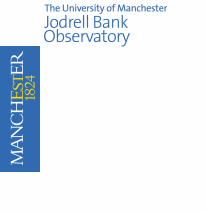Resources
Jump to content:
Papers
| distance.tar.gz | Duncan Lorimer | References | Download |
|
Used in Chapter 4. Distance estimator program comparing a variety of different models used to calculate the distances to pulsars for a given position and DM value. | |||
| PRESTO | Scott Ransom | Reference | |
|
Used in Chapters 5-7. | |||
| SEEK | Duncan Lorimer | Download | |
|
Used in Chapter 6. The SEEK package searches for radio pulsars in noisy data sets. | |||
| FFA | Peter Muller (adapated by Michael Kramer) | ||
|
Used in Chapter 6. | |||
| SIGPROC | Duncan Lorimer | ||
|
Used in Chapter 7. Designed to standardize the initial analysis of the many types of fast-sampled pulsar data being collected using machines at Arecibo and other observatories. | |||
| TEMPO | Princeton University ANTF | Manual | |
|
Used in Chapter 8. Deduces pulsar rotation, astrometric, and binary parameters by fitting models to pulse times of arrival measured at one or more terrestrial observatories. | |||
| TempoTk | Duncan Lorimer | Download | |
|
Used in Chapter 8. An easy-to-use graphical interface to TEMPO. | |||
| TIMAPR | Oleg Doroshenko & Sergei Kopeikin | References 1 2 | Download (UNIX) |
|
Used in Chapter 8. Pulsar timing analysis program, available for UNIX or DOS. | |||
| EPN | |||
|
Used in Chapter 9. Analysis software suite for multi-telescope, multi-frequency data. Includes conversion tools. | |||
| MASSF2 | |||
|
Used to produce mass-mass diagrams similar to the one shown in Chapter 2. Takes various constraints and measured orbital parameters in pulsar binary systems and produces a pulsar mass vs companion mass plot with additional plots for the individual mass probability density functions. | |||
| Telescope | Machine | What is it exactly? | Access | Mode(s) | BW | Nchans | ChBW | Samp | Nbit | Npol | Storage |
| Jodrell Bank | COBRA | Baseband recorder | Public | Timing/Search | <100 | - | - | - | 8 | 4 | Disk |
| Arecibo | WAPP | Digital correlator | Public | Search | 4x100 | 32-1024 | - |
>28 |
16,32 | 4 | Disk |
| Arecibo | AOFTM | FFT spectrometer | Public | Search | 10 | 1024 | 9.8 | 102.4 | 2/4 | 2 | Mammoth |
| Arecibo | PSPM | Analogue filterbank | Public | Search/Timing | 7.68 | 128 | 60 | 80/12 | 4 | 2 | Exabyte/Disk |
| Arecibo | Mk-IV | Baseband recorder | Private | Baseband | 5/10 | - | - | - | 4/2 | 4/4 | DLT |
| Arecibo | CBR | Baseband recorder | Private | Baseband | 5/10 | - | - | - | 4/2 | 4/4 | DLT |
| Arecibo | ASP | Baseband recorder | Public | Timing/Search | <64 | - | - | - | 8 | 4 | Disk |
| Effelsberg | EPOS | Analogue Filterbank | Public | Timing/Search | <2000 | 4 | 0.666-2000 | >0.2 | 32 | 2/4 | Disk |
| Effelsberg | POSEY | Analouge Filterbank | Public | Search | <2000 | 4-64 | 0.666-2000 | >0.2 | 32 | 2/4 | Disk |
| Effelsberg | EBPP | Baseband recorder | Public | Timing | <128 | - | - | - | 4 | 4 | Disk |
| Green Bank | GASP | Baseband recorder | Public | Timing/Search | <64 | - | - | - | 8 | 4 | Disk |
| Green Bank | GPSR | Baseband recorder | Private | Timing/Search | <64 | - | - | - | 8 | 4 | Disk |
| Parkes | CPSR2 | Baseband recorder | Public | Timing/Search | <128 | - | - | - | 2 | 4 | Disk |
| Parkes | PMdaq | Analogue filterbanks | Public | Search/Timing | 288-768 | 96-? | 3000 | 80 | 1 | 2 | Tape |
| Westerbork | PuMA | Digital FB/Baseband rec | Public | Search/Timing | 8x10 | progr. | progr. | Nyquist | 2 | 2/4 | Disk |
| Westerbork | PuMA II | Baseband Recorder | Public | Search/Timing | 160 | -- | -- | -- | 8x20 | 4 | Disk |
